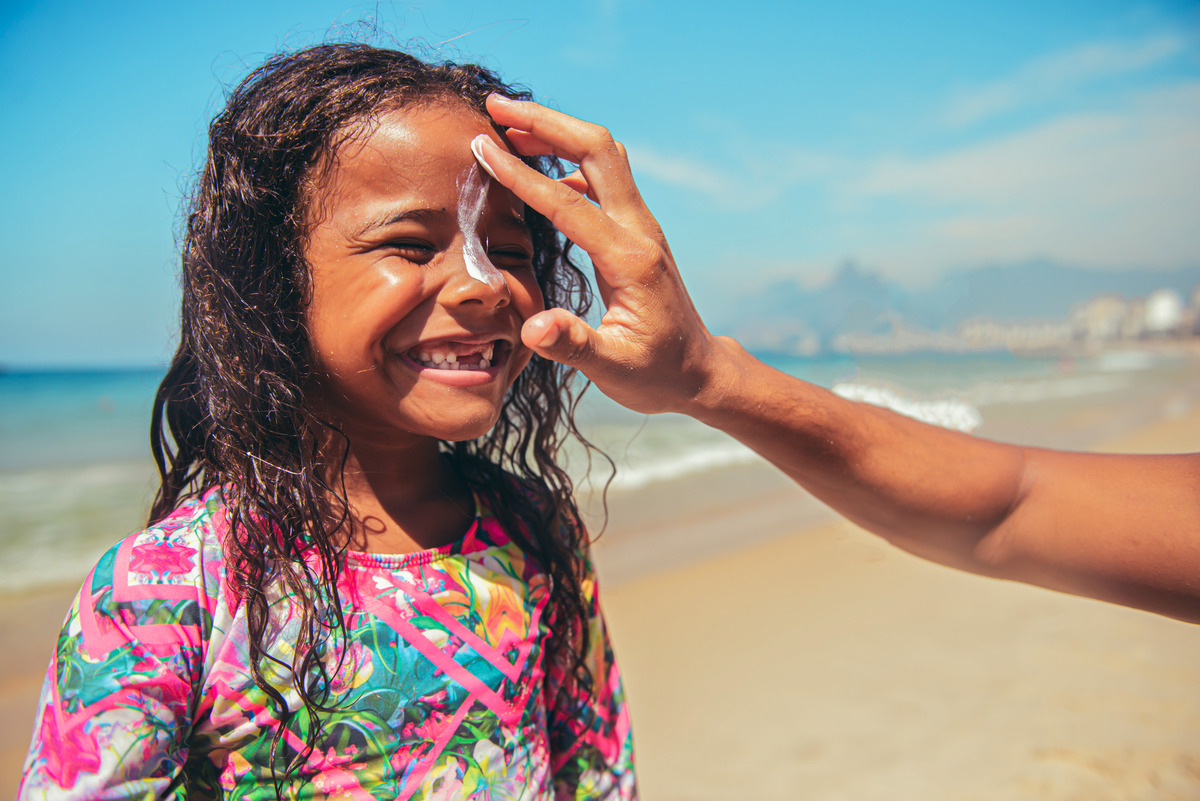-
Services
Featured Specialties
-
Locations
Location Type
-
Patients & Visitors
Published May 01, 2023

Making sure kids get the proper sun protection in the summer can help prevent burns and future skin damage. Even a tan is a sign that kids may be getting too much exposure to harmful UVA and UVB rays.
“There’s no safe tan,” said Yale New Haven Children’s Hospital affiliated pediatric dermatologist Richard Antaya, MD, director of pediatric dermatology for Yale Medicine. “Sunlight contains electromagnetic radiation including visible light, infrared or heat and ultraviolet light. Even small amounts of ultraviolet light can cause DNA damage to skin cells and lead to future skin cancers.”
The most common skin cancers are non-melanoma skin cancers, mainly squamous cell skin cancers and basal cell skin cancer. Basal cell skin cancer impacts one in five adults in their lifetime. Melanoma which will affect 1 in 50 people is more serious and has a higher mortality rate. Just one blistering sunburn can increase the risk of future melanoma.
The American Academy of Dermatology recommends everyone use a broad-spectrum sunscreen that has an SPF of 30 or higher. Parents should also look for a sunscreen that is water resistant, especially if kids are spending time outdoors at the beach or pool.
While there are many sunscreens marketed towards kids, Dr. Antaya recommends parents pick “whatever sunscreen you can get on your child.”
“If it doesn’t go on the skin, it’s not going to protect them from the suns rays,” he said.
One of the most common errors is not applying enough sunscreen. To properly cover the entire skin surface the average-sized adult needs about two tablespoons worth of sunscreen to get the appropriate sun protection. Babies need about a teaspoon’s worth of sunscreen and older kids need about two teaspoon’s worth.
Don’t forget to re-apply! Kids need sunscreen every two hours or after they get wet. While most parents know the struggle of constant sunscreen re-application, sun protective clothing like UPF shirts can help keep kids and babies safe because they are the equivalent to an SPF 30.
Babies have extra sensitive skin and can get burned easily, even by spending just a few minutes unprotected outside. The AAD suggest parents wait until babies are 6 months or older to apply sunscreen because they have a higher ratio of skin surface to body volume than adults, which leads to increased absorption of anything put on their skin. If they are too young for sunscreen, parents can protect babies from the sun by keeping them in the shade and covered with hats and protective clothing.
If that’s not possible, Dr. Antaya says using sunscreen on babies makes sense because you want to protect them from burns. Look for a sunscreen that is made with zinc and titanium and avoid chemical sunscreens.
If kids get sunburns, Dr. Antaya recommends parents keep their child’s skin moisturized. Over the counter non-steroidal anti-inflammatory drugs (NSAIDs) like ibuprofen can be helpful as well.
However, since a burn is a sign of skin damage from too much sunlight, he encourages parents find ways to prevent too much exposure in the first place. For example, if it is too hard to apply lotion sunscreens to children, sunscreen sprays and sticks can be used. This may also help parents re-apply sunscreen to their children every two hours and after getting wet and they can be useful tools for enjoying a safe summer.